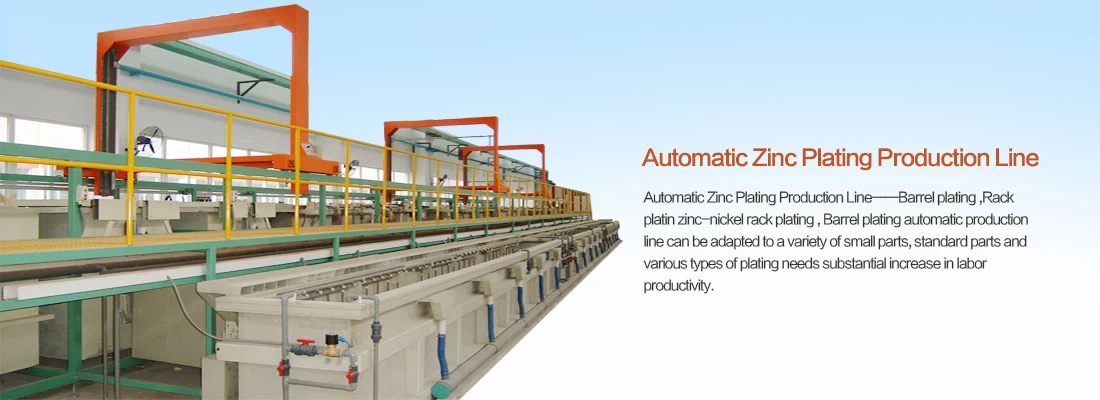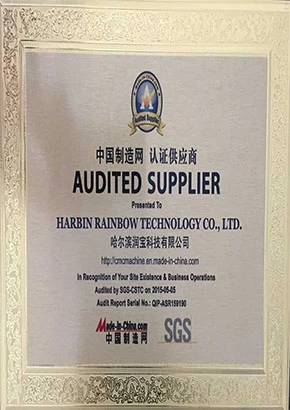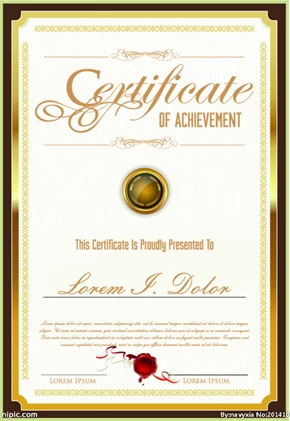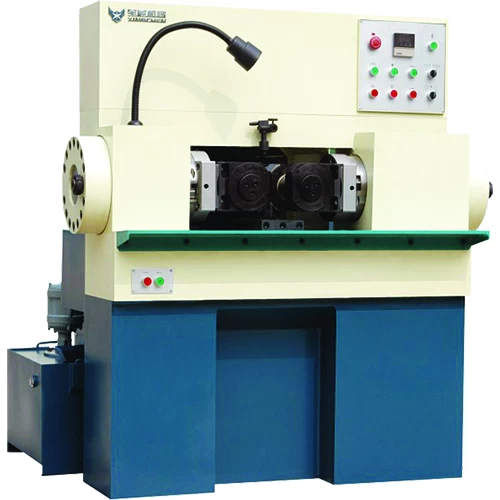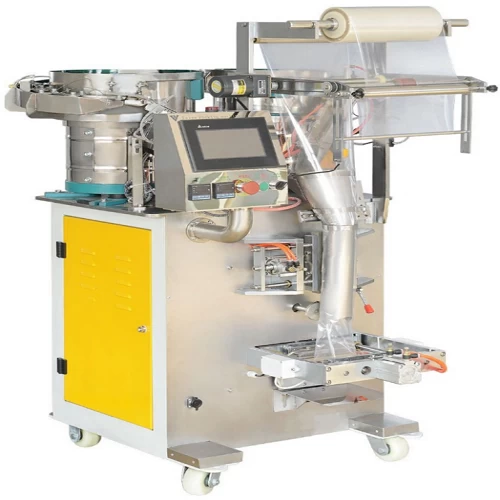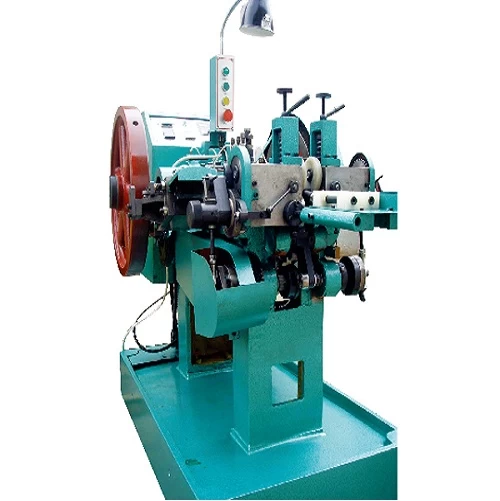Phosphating process
The phosphating process consists of chemical and electrochemical reactions. The phosphating reaction mechanism of different phosphating systems and substrates is complex. Although scientists have done a lot of research in this area, it has not yet been fully understood. A long time ago, the mechanism of phosphating film formation was briefly described by a chemical reaction equation:
8Fe+5Me(H2PO4)2+8H2O+H3PO4- Me2Fe(PO4)2·4H2O (membrane)+Me3(PO4)·4H2O(membrane)+7FeHPO4(sediment)+8H2↑
Me is Mn, Zn and others, Machu et al. believe that steel immersion in a high-temperature solution containing phosphoric acid and dihydrogen phosphate will form a granular phosphating film composed of phosphate precipitate, and produce iron monohydrogen phosphate sediment and hydrogen. This mechanism explanation is relatively crude and cannot fully explain the film-forming process. With the gradual deepening of phosphating research, today, scholars agree that the phosphating film formation process is mainly composed of the following four steps:
(1) The acid etching reduces the H+ concentration on the surface of the base metal
Fe – 2e→ Fe2+
2H2-+2e→2[H] (1)
H2
(2) Accelerator (oxidant) acceleration
[O]+[H] → [R]+H2O
Fe2++[O] → Fe3++[R]
where [O] is the accelerator (oxidant) and [R] is the reduction product, because the accelerator oxidizes the hydrogen atoms produced in the first step of the reaction, the speed of reaction (1) is accelerated, which further leads to a sharp decrease in the H+ concentration on the metal surface. At the same time, Fe2+ in solution is oxidized to Fe3+.
(3) Multistage dissociation of phosphate
H3PO4 H2PO4-+H+ HPO42-+2H+ PO43-+3H- (3)
Due to a sharp decrease in the H+ concentration on the metal surface, the dissociation equilibrium of the phosphate levels shifts to the right, eventually to PO43-.
(4) Phosphate precipitation crystallizes into phosphating film
Phosphate precipitation is formed when PO43- dissociated from the metal surface and metal ions (such as Zn2+, Mn2+, Ca2+, Fe2+) in solution (metal interface) reach the solubility product constant Ksp
Zn2++Fe2++PO43-+H2O→Zn2Fe(PO4)2·4H2O↓ (4)
3Zn2++2PO43-+4H2O=Zn3(PO4)2·4H2O↓ (5)
Phosphate precipitation and water molecules together to form phosphating crystal nuclei, crystal nuclei continue to grow into phosphating grains, countless grains are tightly packed to form a phosphating film.
A side reaction of phosphate precipitation will form phosphating sediment
Fe3++PO43-=FePO4 (6)
The above mechanism can not only explain the zinc-based, manganese-based, zinc-calcium phosphating film formation process, but also guide the design of phosphating formula and phosphating process. It can be seen from the above mechanism that an appropriate oxidant can increase the speed of reaction (2); The lower H+ concentration makes it easier for the dissociation equilibrium of the phosphate dissociation reaction (3) to shift to the right to dissociate PO43-; If there is an active point surface on the metal surface, the precipitation reaction (4) (5) can form phosphate precipitation nuclei without too much supersaturation; The production of phosphating sediment depends on reaction (1) and reaction (2), and the high concentration of solution H+ and the strong accelerator increase the sediment. Correspondingly, in the actual phosphating formula and process implementation, the surface is: appropriate strong accelerator (oxidant); Higher acid ratio (relatively low free acid, i.e. H+ concentration); Adjusting the metal surface to have an active point can improve the phosphating reaction rate and quickly form a film at a lower temperature. Therefore, the above mechanism is generally followed in the design of low-temperature rapid phosphating formula, and strong accelerators, high acid ratios, and surface adjustment processes are selected.
About phosphating sediment. Because phosphating sediment is mainly FePO4, to reduce the amount of sediment, it is necessary to reduce the amount of Fe3+ produced, that is, through two methods: reduce the H+ concentration of phosphating solution (low free acidity); Reduce the accelerator concentration to reduce the oxidation of Fe2+ to Fe3+.
The phosphating mechanism of zinc and aluminum is basically the same as above. The phosphating rate of zinc is relatively fast, and the phosphating membrane is only composed of zinc phosphate, and there is very little sediment. Aluminum phosphating generally adds more fluorine compounds to form AlF3, AlF63-, aluminum phosphating step polymerization is basically the same as the above mechanism.
There are many classification methods for phosphating, but they are generally classified according to phosphating film forming system, phosphating film thickness, phosphating use temperature, and accelerator type.
system
According to phosphating film forming system, it is mainly divided into: zinc system, zinc calcium system, zinc-manganese system, manganese system, iron system, amorphous phase iron system six categories.
The main body of zinc-based phosphating bath liquid is: Zn2+, H2PO3-, NO3-, H3PO4, accelerator, etc. The main composition of the phosphating film formed (steel parts): Zn3(po4)2·4H2O, Zn2Fe(PO4)2·4H2O. The phosphating grains are dendritic, needle-like and porous. It is widely used in priming, corrosion prevention and cold working friction reduction lubrication before painting.
The main components of zinc-calcium phosphating bath are: Zn2+, Ca2+, NO3-, H2PO4-, H3PO4 and other additives. The main composition of the phosphating film (steel parts): Zn2Ca(PO4)2·4H2O, Zn2Fe(PO4)2·4H2O, Zn3(PO4)2·4H2O. The phosphating grains are compact granular (sometimes with large needle-like grains) with fewer pores. It is used for priming and corrosion prevention before painting.
The main composition of zinc-manganese phosphating bath solution: Zn2+, Mn2+, NO3-, H2PO4-, H3PO4 and some other additives. The main composition of phosphating film: Zn2Fe(PO4)2·4H2O, Zn3(PO4)2·4H2O, (Mn,Fe)5H2(PO4)4·4H2O, phosphating grains are granular-needle-dendritic mixed crystal shape, with fewer pores. Widely used in priming, corrosion prevention and cold working friction reduction lubrication before painting.
The main composition of manganese phosphating bath: Mn2+, NO3-, H2PO4, H3PO4 and some other additives. The main composition of phosphating film is formed on the steel parts: (Mn, Fe)5H2(PO4)4·4H2O. The phosphating film has a large thickness and few pores, and the phosphating grains are densely grained. Widely used in corrosion prevention and cold working friction reduction.
The main composition of iron phosphating bath is Fe2+, H2PO4, H3PO4 and some other additives. The main composition of the phosphating film (steel workpiece): Fe5H2 (PO4)4·4H2O, the thickness of the phosphating film is large, the phosphating temperature is high, the processing time is long, the membrane pores are more, and the phosphating grains are granular. It is used for corrosion protection and cold working friction reduction lubrication.
The main components of amorphous iron phosphating bath solution: Na+ (NH4+), H2PO4, H3PO4, MoO4- (ClO3-, NO3-) and some other additives. The main composition of the phosphating film (steel parts): Fe3 (PO4)2·8H2O, Fe2O3, the phosphating film is thin, and the microscopic film structure is a plane distribution of amorphous phase, which is only used for priming before painting.
Film thickness
According to the thickness of the phosphating film (phosphating film weight), it can be divided into four types: sublightweight, lightweight, sub-heavyweight and heavyweight. The sub-lightweight film weight is only 0.1~1.0g/m2, generally amorphous iron phosphating film, only used for priming before painting, especially the priming effect before painting of deformed large workpieces. The lightweight film weighs 1.1~4.5 g/m2, which is widely used in priming before paint, and is less used in anti-corrosion and cold working industries. The thickness of the sub-heavyweight phosphating film is 4.6~7.5 g/m2, due to the large film weight, the film is thicker (generally > 3μm), less used as a primer before paint (only as a primer before painting steel parts that are basically not deformed), which can be used for corrosion prevention and cold working to reduce friction and slip. Heavyweight film weighing more than 7.5 g/m2, not used as a pre-paint primer, widely used for corrosion prevention and cold working.
Phosphating treatment temperature
According to the processing temperature, it can be divided into four categories: normal temperature, low temperature, medium temperature and high temperature. Room temperature phosphating is unheated phosphating. The general treatment temperature of low temperature phosphating is 30~45 °C. Medium temperature phosphating is generally 60~70 °C. High-temperature phosphating is generally greater than 80 °C. The temperature division method itself is not strict, and sometimes there are sub-medium temperature and sub-high temperature methods, depending on the wishes of each person, but generally follow the above division method. In actual processing, the higher the general temperature, the shorter the film forming time, and the lower the temperature, the longer it is. When processing metal phosphating in China, the most commonly used is medium temperature phosphating. It is not as sensitive to the concentration of phosphating liquid as high temperature, and temperature control and processing operation requirements are relatively easy to achieve.
Accelerator
Since there are only so many phosphating accelerators, it is conducive to the understanding of the bath according to the type of accelerator. According to the type of accelerator, the phosphating treatment temperature can be roughly determined, such as NO3-accelerator is mainly medium temperature phosphating. Accelerators are mainly divided into: nitrate type, nitrite type, chlorate type, organic nitride type, molybdate type and other main types. Each accelerator type can be used in conjunction with other accelerators, and there are many sub-series. Nitrate types include: NO3- type, NO3-/NO2- (autogenous type). Chlorate types include: ClO3-, ClO3-/NO3-, ClO3-/NO2-. Nitrite includes: nitroguanidine R-NO2-/ClO3-. Molybdate types include: MoO4-, MoO4-/ClO3-, MoO4-/NO3-.
There are many other phosphating classification methods, such as steel parts, aluminum parts, zinc parts and mixed parts phosphating according to the material.
Preprocessing Edit Announce
Under normal circumstances, phosphating treatment requires that the surface of the workpiece should be a clean metal surface (except for two-in-one, three-in-one, and four-in-one). Before phosphating, the workpiece must be pretreated with grease, rust, oxide scale and surface adjustment. In particular, phosphating for priming before painting also requires surface adjustment, so that the metal surface has a certain "activity", and the formation of a staggered crystal spore substrate, in order to obtain a uniform, fine and dense phosphating film, to achieve the requirements of improving the adhesion and corrosion resistance of the paint film. Therefore, phosphating pretreatment is the basis for obtaining high-quality phosphating films.
1 Grease removal
The purpose of grease removal is to remove grease and oil stains on the surface of the workpiece. Including mechanical method and chemical method. The mechanical method is mainly: manual brushing, sand blasting, flame burning, etc. Chemical method mainly: solvent cleaning, acid cleaning agent cleaning, strong alkaline cleaning and low alkaline cleaning agent cleaning. The following describes the chemical grease removal process.
1.1 Solvent cleaning
Solvent method to remove grease, generally using non-flammable halogenated hydrocarbon vapor method or emulsification method. The most common is the use of trichloroethane, trichloroethylene, perchloroethylene steam to remove grease. Steam degreasing speed is fast, high efficiency, degreasing is clean and thorough, and the removal effect of all kinds of oils and greases is very good. Add a certain emulsion to the chlorinated hydrocarbon, whether it is soaking or spraying, the effect is very good. Due to the toxicity of chlorinated halogen, the vaporization temperature is also high, and due to the emergence of new water-based low alkaline cleaning agents, solvent vapor and emulsion grease removal methods have been rarely used.
1.2 Acid cleaning agent
Acid cleaner grease removal is a very widely used method. It uses the principle of emulsification, wetting and penetration of surfactants, and the mechanical peeling effect of acid corroding metal to produce hydrogen to achieve the purpose of removing grease. Acidic cleaners can be used at low and medium temperatures. Low temperature can generally only remove liquid oil, medium temperature can remove oil and grease, generally only suitable for soaking treatment. Acid cleaning agent is mainly composed of surfactants (such as OP non-ionic active agent, sodium anionic sulfonate type), ordinary inorganic acid, corrosion inhibitor. Because it has both the dual functions of rust removal and grease removal, people are used to calling it "two-in-one" treatment fluid.
Hydrochloric acid and sulfuric acid-based cleaning agents are the most widely used, with low cost and high efficiency. However, the pickling residue Cl- and SO42- are very harmful to the post-corrosion of the workpiece. The phosphoric acid base has no hidden danger of corrosion residue, but the cost of phosphoric acid is higher and the cleaning efficiency is lower.
For zinc parts, aluminum parts are generally not cleaned with acid cleaning agents, especially zinc parts corrode extremely quickly in acid.
1.3 Strong lye cleaning
Strong lye grease removal is a traditional and effective method. It is the use of strong alkali on vegetable oil saponification reaction to form water-soluble saponification to achieve the purpose of removing grease. Pure strong lye can only be saponified to remove vegetable oils, but not mineral oils. Therefore, people add surfactants, generally sulfonic anionic active agents, to strong lye to achieve the purpose of removing mineral oil. The use temperature of strong alkali to remove grease is high, usually 〉80 °C. Commonly used strong lye cleaning formulas and processes are as follows:
Sodium hydroxide 5%~10%
Sodium silicate 2%~8%
Sodium phosphate (or sodium carbonate) 1%~10%
Surfactant (sulfonic acid) 2%~5%
Processing temperature >80°C
Processing time 5~20min
Treatment methods can be soaked or sprayed
Strong lye grease removal requires higher temperature, high energy consumption, corrosive to equipment, and the material cost is not low, so the application of this method is gradually decreasing.
1.4 Low alkaline cleaning solution cleaning
Low alkaline cleaning fluid is currently the most widely used class of degreasing agents. Its alkalinity is low, and the general pH value is 9~12. The corrosion of the equipment is small, the damage to the surface state of the workpiece is small, it can be used at low and medium temperature, and the efficiency of grease removal is high. Especially when used in the spray method, the grease removal effect is particularly good. Low alkaline cleaning agent is mainly composed of inorganic low alkaline additives, surfactants, defoamers, etc. Inorganic additives are mainly sodium silicate, sodium tripolyphosphate, sodium phosphate, sodium carbonate, etc. Its function is to provide a certain alkalinity and have a dispersion suspension effect. This prevents the re-adsorption of the grease on the surface of the workpiece. Surfactants mainly use non-ionic and anionic types, generally polyvinyl chloride OP and sulfonate types, which play a major role in the process of removing grease. When there are special requirements, it is also necessary to add some other additives, such as adding defoamer when spraying, and sometimes adding surface adjuster, which plays the dual function of degreasing and surface adjustment. Low alkaline cleaning agents have many commercial products, such as PA30-IM, PA30-SM, FC-C4328, Pyroclean442, etc.
The commonly used formulations and processes of low alkaline cleaning solution are as follows:
Soak type Spray type
Sodium tripolyphosphate 4~10g/l 4~10g/l
Sodium silicate 0~10g/l 0~10g/l
Sodium carbonate 4~10g/l 4~10g/l
Defoamer 0 0.5~3.0g/l
Surface conditioner 0~3 g/l 0~3 g/l
Free alkalinity 5~20 points 5~15 points
Processing temperature: room temperature ~ 80 °C 40 ~ 70 °C
Processing time 5~20min 1.5~3.0min
Soaked cleaning agent should mainly pay attention to the problem of the cloud point of the surfactant, when the treatment temperature is higher than the cloud point, the surfactant precipitation floats, so that it loses the ability to degrease, generally add anionic active agent can be solved. Spray cleaners should be added with sufficient defoamer, it is especially important that no foam is generated when spraying.
When cleaning aluminum parts and zinc parts, it is necessary to consider their corrosion under alkaline conditions, and it is generally advisable to use a cleaning agent close to neutrality.
2 Pickling
The methods of pickling rust removal and descaling are the most widely used methods in the industrial field. The mechanical peeling effect of acid on oxide dissolution and corrosion to produce hydrogen is used to achieve the purpose of rust removal and descaling . The most common ones used in pickling are hydrochloric acid, sulfuric acid, and phosphoric acid. Nitric acid is rarely used due to the toxic nitrogen dioxide gas produced during pickling. Hydrochloric acid pickling is suitable for use at low temperature, should not exceed 45 °C, the concentration of 10% ~ 45%, should also add an appropriate amount of acid mist inhibitors. The pickling speed of sulfuric acid at low temperature is very slow, and it should be used at medium temperature, the temperature is 50~80 °C, and the concentration is 10%~25%. The advantage of phosphoric acid pickling is that it will not produce corrosive residues (hydrochloric acid, sulfuric acid pickling will be more or less Cl-, SO42- residue), relatively safe, but the disadvantage of phosphoric acid is higher cost, pickling speed is slower, generally use the concentration of 10% ~ 40%, the processing temperature can be normal temperature to 80 °C. In the pickling process, the use of mixed acids is also a very effective method, such as hydrochloric acid-sulfuric acid mixed acid, phosphoric acid-citric acid mixed acid.
In the pickling rust removal and descaling bath solution, an appropriate amount of corrosion inhibitor must be added. There are many types of corrosion inhibitors, and it is relatively easy to choose, and its role is to inhibit metal corrosion and prevent "hydrogen embrittlement". However, when pickling "hydrogen embrittlement" sensitive workpieces, the selection of corrosion inhibitors should be particularly careful, because some corrosion inhibitors inhibit the reaction of two hydrogen atoms into hydrogen molecules, namely: 2 [H]→H2↑, so that the concentration of hydrogen atoms on the metal surface is increased, and the "hydrogen embrittlement" tendency is enhanced. Therefore, it is necessary to consult the relevant corrosion data sheet, or do a "hydrogen embrittlement" test to avoid the use of dangerous corrosion inhibitors.
3 Neutralize
The role of neutralization is to remove the acid remaining on the surface of the workpiece after pickling.
Neutralize control elements:
(1) Remove the residual liquid carried from the surface or gap of the workpiece during the pickling process, control the pH ≥ 10, once it is lower than 10, it basically loses the neutralization ability, and it is necessary to add soda ash in time.
(2) For lumen parts, group weldments, hot-rolled parts, etc., due to the acid residue in the welding gap and lumen, it is necessary to strengthen the stirring during neutralization to accelerate the acid-base neutralization and appropriately extend the neutralization time.
4. Surface adjustment
The purpose of surface adjustment is to promote phosphating to form a phosphating film with fine and dense grains, and to increase the phosphating rate. There are two main types of surface conditioners, one is acidic surface conditioners, such as oxalic acid. The other is colloidal titanium. Both applications are very popular, and the former also has the effect of removing light rust ("water rust" and "wind rust" formed during the operation of the workpiece). In the phosphating pretreatment process, whether to choose the surface adjustment process and the choice of which kind of surface adjustment agent are determined by the process and the requirements of the phosphating film. The general principle is: priming phosphating before painting, rapid low-temperature phosphating requires surface adjustment. If the workpiece has rusted for the second time when entering the phosphating tank, it is best to use acid surface adjustment, but acid surface adjustment is only suitable for medium temperature phosphating at ≥ 50 °C. Generally, medium temperature zinc calcium phosphating can be adjusted without expression. The pretreatment process before phosphating is:
Grease removal - water washing - pickling - water washing - neutralization - surface tone - phosphating
Degreasing and rust removal "two-in-one" - water washing - neutralization - surface adjustment - phosphating
Grease removal - washing - surface adjustment - phosphating
Neutralization is generally 0.2%~1.0% soda ash aqueous solution. In some processes, a pre-grease removal process is also added for heavy grease workpieces.



